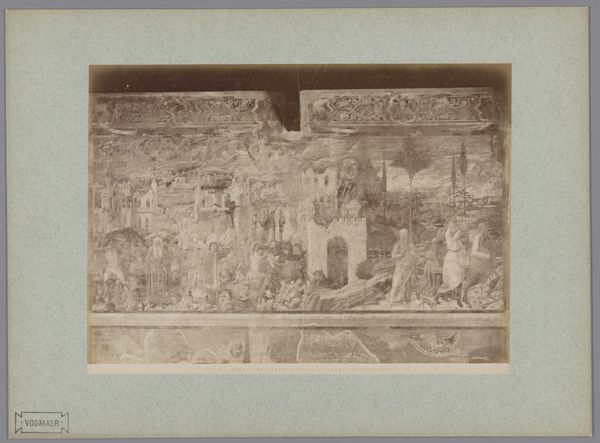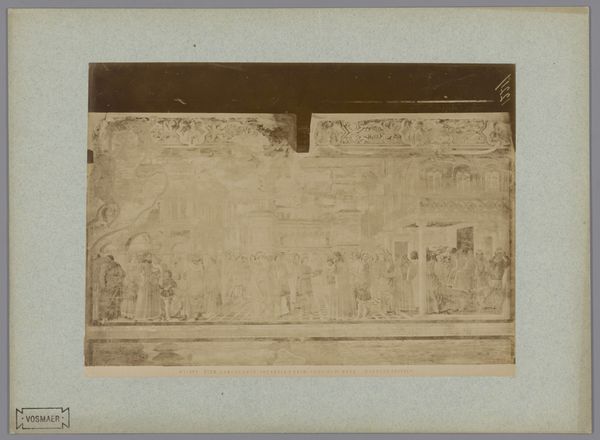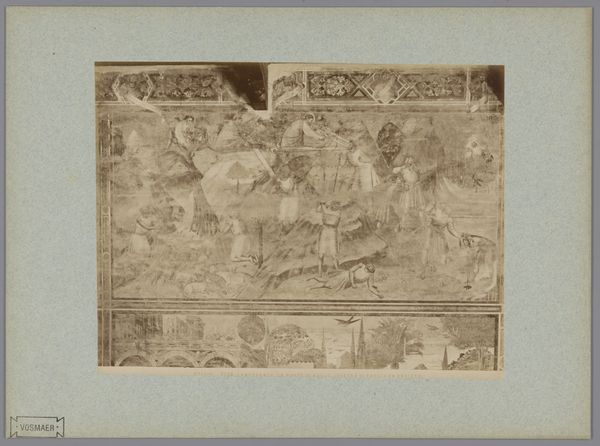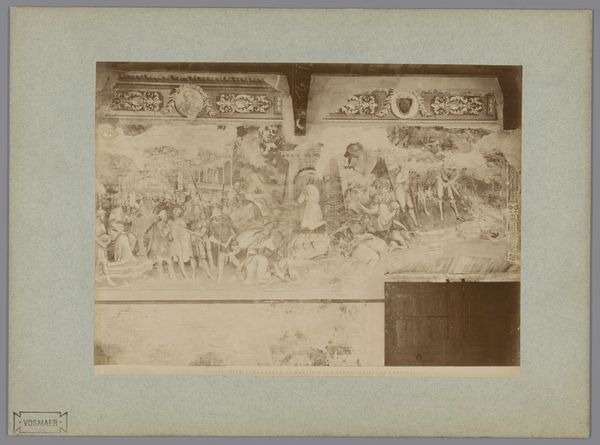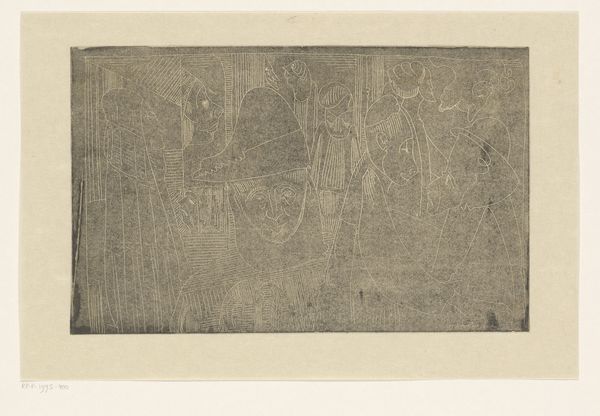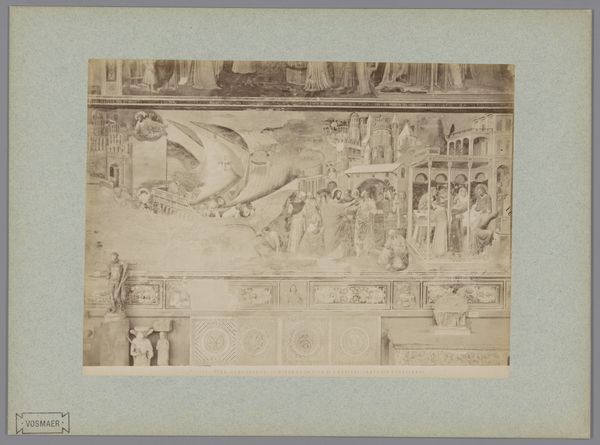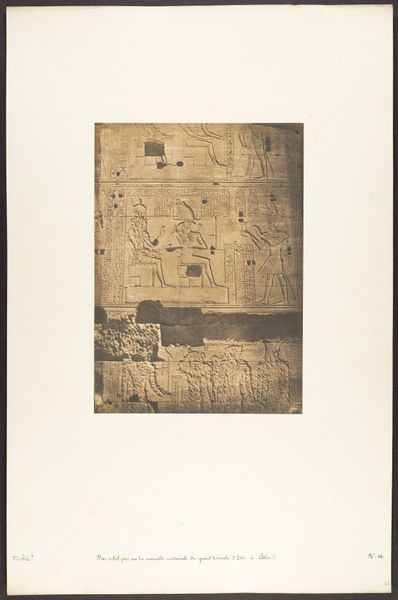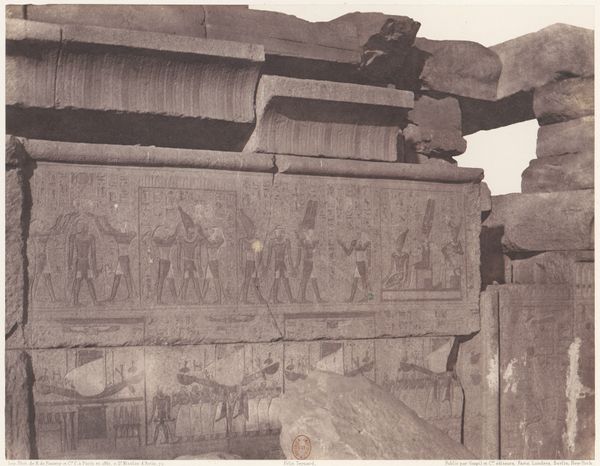
Fotoreproductie van het fresco Huwelijk van Jacob en Rachel naar Benozzo Gozzoli in het Camposanto te Pisa, Italië 1857 - 1900
0:00
0:00
print, fresco, photography, gelatin-silver-print
#
photo of handprinted image
#
aged paper
#
toned paper
# print
#
landscape
#
fresco
#
photography
#
ancient-mediterranean
#
gelatin-silver-print
#
history-painting
#
italian-renaissance
#
monochrome
Dimensions: height 186 mm, width 260 mm, height 260 mm, width 353 mm
Copyright: Rijks Museum: Open Domain
Curator: This gelatin-silver print, likely created between 1857 and 1900 by Fratelli Alinari, captures a fresco titled “Huwelijk van Jacob en Rachel” – or “The Marriage of Jacob and Rachel”. The original fresco was painted by Benozzo Gozzoli in the Camposanto in Pisa, Italy. Editor: It has a faded, almost ghostlike quality. The print medium itself adds another layer to our perception – like archaeology on archaeology. You can see the ageing process of the image printed onto aged paper; the image barely hangs on! Curator: The choice of Jacob and Rachel as the subject matter is interesting. Their story, fraught with deception and perseverance for love, has long resonated within theological discourse. Notice the fresco, divided into distinct registers like episodes in a story; that really emphasizes its narrative intent. Editor: And this gelatin-silver printing technique itself allows for mass distribution of high art – enabling new audiences to see art formerly accessible only in-situ to Italian travelers. It transforms how this image functions within society by altering its mode of consumption. The means of production have huge impact! Curator: Absolutely. And thinking about the symbols – marriage representing covenant, lineage, and promise – it suggests stability, hope, even amidst turbulent historical currents. In a world that often felt precarious, perhaps viewers took comfort in the image. Editor: The materials contribute to that perceived stability, albeit paradoxically, through the way the image’s monochrome evokes the grandeur of Roman ruins. Frescoes demand considerable labor; creating and reproducing them serves different social functions with similar content. Curator: Precisely. Ultimately, looking at an image like this invites us to consider what endures – visually and conceptually – across time, across cultures, and different modes of artistry. Editor: A testament to the ways that artistic choices affect the value and longevity of images throughout history. The choices behind material transformations reveal shifts in our relationship with it.
Comments
No comments
Be the first to comment and join the conversation on the ultimate creative platform.
